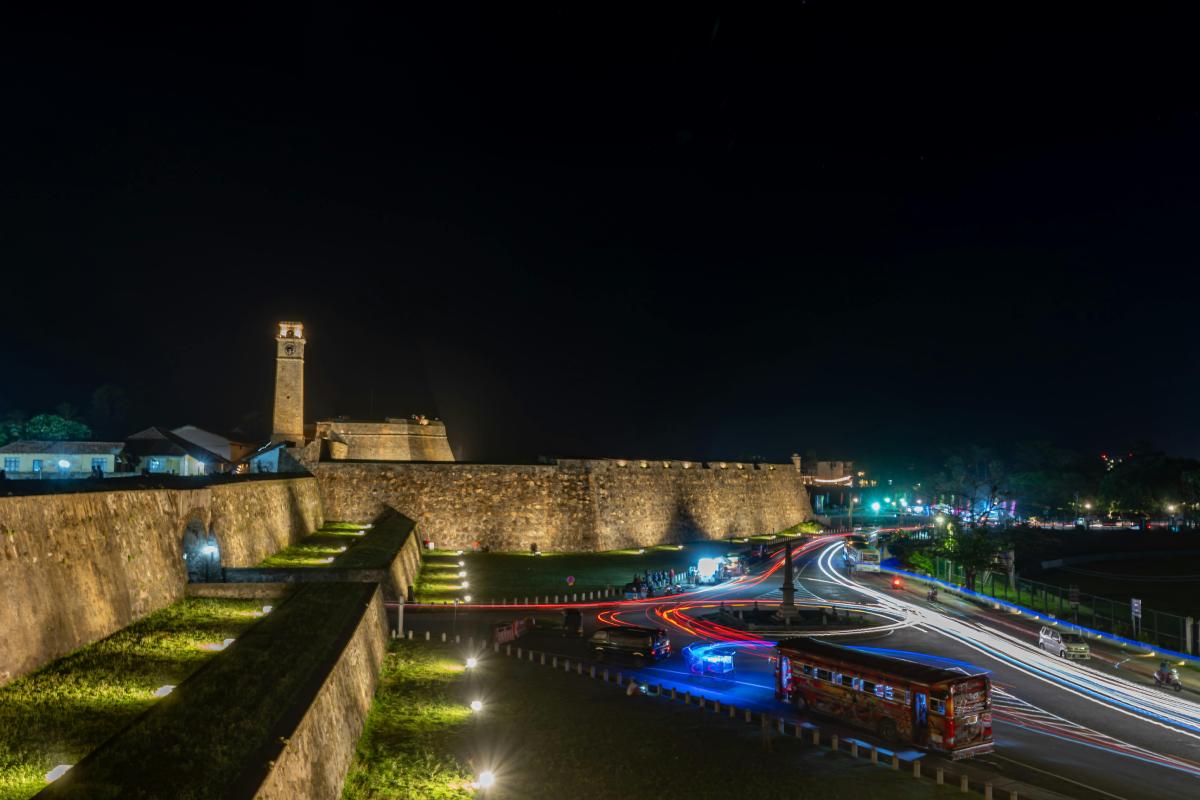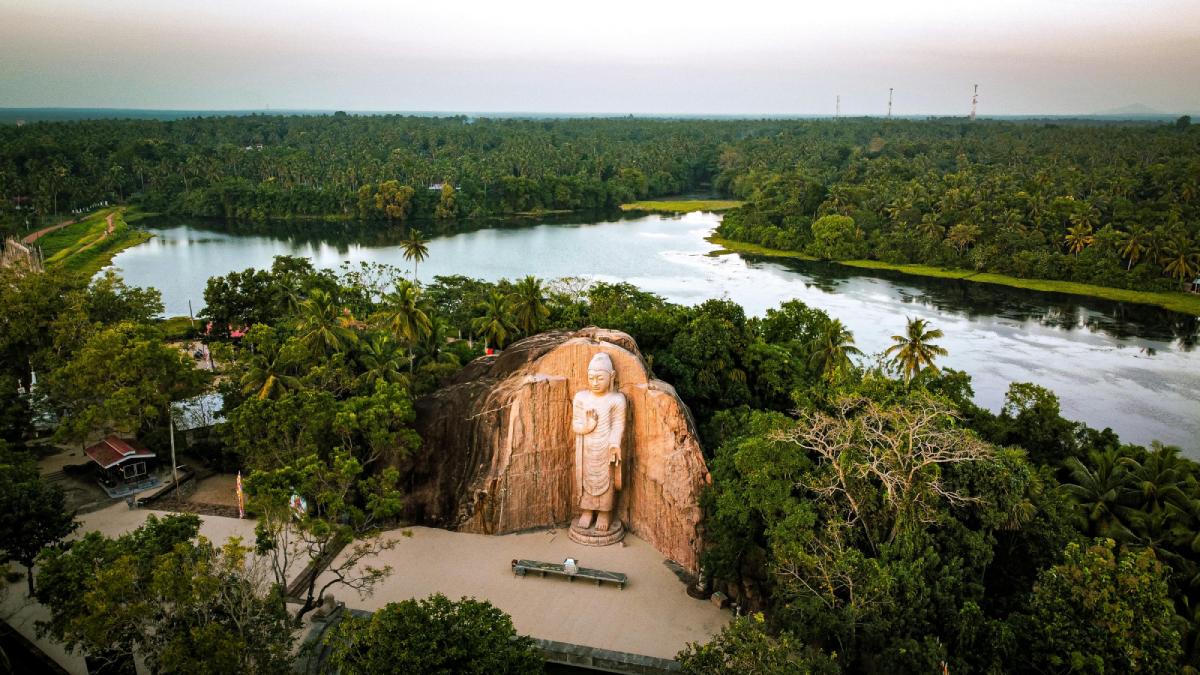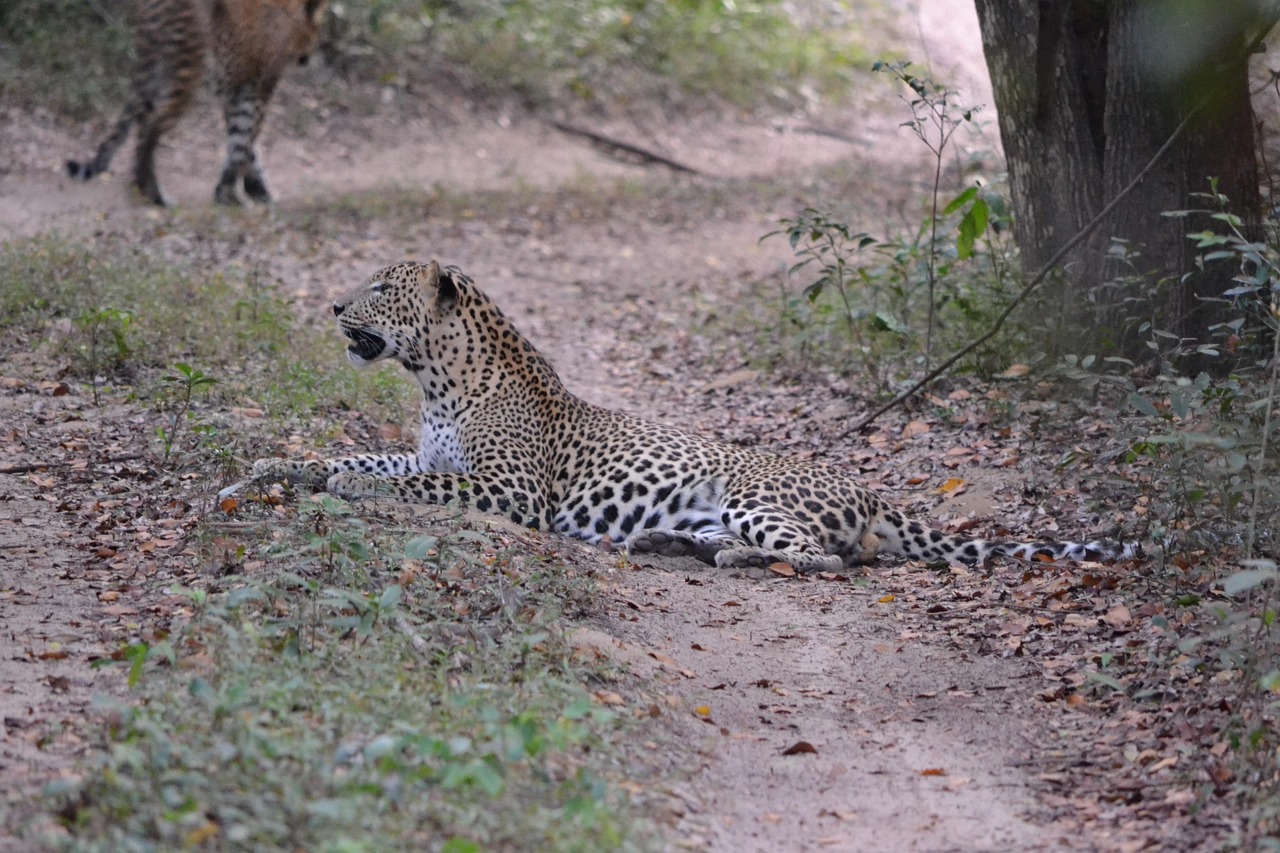Exploring Sri Lanka on a Budget
Sri Lanka, the teardrop-shaped island nation in the Indian Ocean, offers travelers an incredible blend of stunning landscapes, rich cultural heritage, delicious cuisine, and warm hospitality—all without breaking the bank. From pristine beaches and misty mountains to ancient ruins and wildlife sanctuaries, this compact country packs an impressive array of experiences into its borders.
As someone who has navigated this beautiful island on a shoestring budget, I’m excited to share my comprehensive guide to experiencing the best of Sri Lanka while keeping costs low. Whether you’re a backpacker, a family looking to stretch your vacation dollars, or simply a savvy traveler, these tips and tricks will help you make the most of your Sri Lankan adventure without emptying your wallet.
When to Visit: Timing Matters
Sri Lanka experiences two distinct monsoon seasons affecting different parts of the country at different times:
- May to August: The southwest monsoon brings rain to the west and southwest coasts and central highlands.
- October to January: The northeast monsoon affects the north and east coasts.
The budget-conscious traveler should consider visiting during the shoulder seasons (April-May and September-November). During these periods, you’ll find fewer tourists, more accommodation availability, and better deals while still enjoying reasonably good weather in many parts of the island.
Budget Tip: Traveling during low season (May-August for the south and west, October-January for the north and east) can save you up to 30-40% on accommodation costs, though you’ll need to be prepared for some rain.
Getting There: Finding Affordable Flights
Flying to Sri Lanka will likely be your biggest expense, but there are ways to minimize costs:
- Book in advance: Aim to secure flights 2-3 months before your trip for the best rates.
- Consider connecting flights: Direct flights to Colombo can be pricey. Routes with a stopover in Middle Eastern hubs like Dubai, Abu Dhabi, or Doha often offer better deals.
- Set fare alerts: Use flight comparison tools like Skyscanner, Google Flights, or Momondo, and set alerts for price drops.
- Be flexible with dates: Flying mid-week often results in lower fares than weekend departures.
Budget Tip: If you’re already traveling in South Asia, look for budget carriers flying from regional hubs like Chennai, Mumbai, or Bangkok for significantly cheaper rates.
Visa Requirements: Plan Ahead
Most visitors to Sri Lanka require an Electronic Travel Authorization (ETA) before arrival. The process is straightforward:
- Apply online through the official ETA website
- The standard tourist visa is valid for 30 days and costs around $35 USD for most nationalities
- Processing typically takes 24-48 hours
Budget Tip: Apply for your visa yourself online rather than through third-party services that charge extra fees.
Getting Around: Transportation on a Budget
Sri Lanka offers a rich variety of transportation options at different price points:
Trains
The railway network is perhaps Sri Lanka’s transportation highlight—affordable, scenic, and an experience in itself.
- Cost: First-class reserved seats range from $5-15 USD for longer journeys, while second and third-class unreserved tickets often cost less than $2.
- Popular routes: The Kandy to Ella train journey is world-famous for its breathtaking mountain views.
- Booking: For popular routes, book first-class seats in advance through the Sri Lanka Railways website or at major stations.
Budget Tip: Second-class unreserved tickets offer tremendous value, though they can get crowded. Board at the starting station to secure a seat, especially for scenic routes.
Buses
The extensive bus network reaches virtually every corner of the island:
- Local buses: Incredibly cheap (often less than $1 for most journeys) but can be crowded and uncomfortable.
- Express buses: Slightly more expensive but faster and more comfortable.
- Private buses: Offer more comfort with air conditioning for about twice the price of regular buses.
Budget Tip: Regular buses don’t follow strict timetables—they depart when full. Arrive early in the morning for popular routes to avoid long waits.
Tuk-tuks
These three-wheeled taxis are ubiquitous across Sri Lanka:
- Cost: Short rides within towns typically cost $1-3.
- Negotiation: Always agree on a price before starting your journey or insist on using the meter (where available).
- Apps: In larger cities, try apps like PickMe (Sri Lanka’s equivalent to Uber) for fair prices.
Budget Tip: A fair price is typically LKR 50-60 (approximately $0.25-0.30) per kilometer. Calculate the rough distance before negotiating to avoid overpaying.
Renting Scooters/Motorbikes
For independent travelers comfortable with local road conditions:
- Cost: $7-15 per day, depending on the type of bike and location.
- Requirements: International driving permit with motorcycle endorsement.
- Safety: Traffic can be chaotic, and road conditions vary considerably.
Budget Tip: Negotiate weekly or longer rental rates for substantial discounts, and check the bike thoroughly before accepting it.
Accommodation: Sleep Well for Less
Sri Lanka caters to all budgets with diverse accommodation options:
Hostels and Guesthouses
- Cost: Dorm beds range from $5-12 per night, while basic private rooms start around $15-25.
- Benefits: Often family-run with personalized service and local knowledge.
- Locations: Available in most tourist areas, especially in coastal towns and cultural hubs.
Budget Tip: Many family-run guesthouses offer discounts for longer stays or if you book directly rather than through online platforms.
Homestays
- Cost: $15-30 per night, often including breakfast.
- Benefits: Cultural immersion, home-cooked meals, and local insights.
- Booking: Sites like Airbnb and Booking.com feature numerous options, or ask for recommendations from other travelers.
Budget Tip: Homestays outside major tourist centers often offer better value and a more authentic experience.
Budget Hotels
- Cost: $25-50 per night for clean, basic accommodations.
- Benefits: More privacy and amenities than hostels while remaining affordable.
- Location: Abundant in popular tourist destinations.
Budget Tip: During low season, many budget hotels will accept walk-in rates significantly lower than their online prices. If your schedule is flexible, try this approach.
Eating: Delicious Cuisine Without the Price Tag
Sri Lankan cuisine is a delight for food lovers and budget travelers alike:
Street Food and Local Eateries
- Cost: $1-3 for a filling meal.
- Must-tries: Kottu roti (chopped flatbread stir-fried with spices and meat/vegetables), hoppers (bowl-shaped pancakes), and short eats (savory snacks).
- Where to find: Look for busy spots with lots of locals—always a good sign.
Budget Tip: The “rice and curry” meal is the ultimate budget option—a heaping plate of rice accompanied by multiple vegetable, lentil, and sometimes meat curries for around $2-3.
Local Restaurants
- Cost: $3-7 for a complete meal.
- Experience: More comfortable seating and slightly more refined dishes.
- Recommendations: Ask locals or your accommodation host for authentic, reasonably priced places.
Budget Tip: Many restaurants offer “lunch packets”—takeaway meals with rice, curry, and sides wrapped in banana leaves or paper for a fraction of the sit-down price.
Self-Catering
- Markets: Fresh tropical fruits, vegetables, and seafood are incredibly affordable at local markets.
- Supermarkets: For basics like bread, eggs, and snacks.
- Cooking facilities: Many hostels and guesthouses offer kitchen access.
Budget Tip: Start your day with a hearty breakfast if included in your accommodation price, then buy fruit and snacks for lunch to save money for a proper dinner.
Sightseeing: Experiencing the Best for Less
Sri Lanka’s cultural and natural attractions vary in price, but many can be enjoyed affordably:
Cultural Sites
- Ancient cities: The Cultural Triangle sites (Anuradhapura, Polonnaruwa, Sigiriya) charge entrance fees of $15-30.
- Temples: Most Buddhist temples are free or request small donations.
- Museums: Government museums typically charge $2-5 for foreigners.
Budget Tip: The Cultural Triangle Ticket ($50) offers access to multiple sites at a discounted rate if you plan to visit several major attractions.
Natural Attractions
- National parks: Entry fees range from $10-30 plus vehicle costs (typically $10-20).
- Beaches: Free access to most beaches along the coast.
- Hiking trails: Some popular trails like Adam’s Peak or Horton Plains National Park charge entrance fees ($5-10).
Budget Tip: Consider less-visited national parks like Wilpattu or Udawalawe, which offer excellent wildlife viewing at lower costs than the more famous Yala National Park.
Free and Low-Cost Activities
- Beach days at Mirissa, Unawatuna, or Arugam Bay
- Walking tours of colonial Galle Fort
- Hiking through tea plantations near Ella
- Exploring local markets in any town or city
- Attending local festivals and cultural events
Budget Tip: Many guesthouses organize informal walking tours or excursions at a fraction of what tour companies charge.
Safari and Wildlife Experiences on a Budget
Wildlife encounters are a highlight of many Sri Lankan trips:
- Group tours: Join other travelers to share the cost of vehicle and guide ($20-40 per person).
- Timing: Morning safaris (5:30-9:30 AM) typically offer better wildlife sightings than afternoon sessions.
- Alternatives: Many parks allow entry on foot or by bicycle at significantly reduced rates.
Budget Tip: Stay near park entrances in budget accommodations and arrange safaris directly through your guesthouse rather than booking in advance through tour operators.
Money-Saving Tips for Activities
- Entrance fees: Many sites offer discounted rates for students with valid international ID.
- Group discounts: Gather fellow travelers from your accommodation to negotiate group rates for tours and transportation.
- Local guidance: Hire local guides directly rather than through agencies for authentic experiences at better prices.
- Free alternatives: Research free alternatives to paid attractions—for example, visiting small local temples instead of major tourist sites.
Communication and Connectivity
Staying connected in Sri Lanka is affordable:
- SIM cards: Available at the airport and in shops throughout the country ($5-10).
- Data packages: 5-10GB packages cost around $5-8 and last 30 days.
- Major providers: Dialog, Mobitel, and Airtel offer good coverage.
Budget Tip: Most accommodation options offer free WiFi, eliminating the need for constant mobile data if you’re primarily using the internet at your lodging.
Practical Budget Tips
- Water: Avoid buying bottled water. Instead, bring a reusable bottle with a filter or use purification tablets. Many guesthouses offer filtered water refills for guests.
- Bargaining: Negotiate prices for souvenirs, tuk-tuks, and some services, but do so respectfully.
- Tipping: Not strictly expected but appreciated—10% is generous for good service.
- Cash vs. cards: While major hotels and restaurants accept cards, smaller establishments and markets require cash. ATMs are widely available in towns and cities.
Sample Budget Breakdown (Per Day)
- Accommodation: $10-25
- Food: $05-10
- Transportation: $5-10
- Activities/entrance fees: $5-15
- Miscellaneous: $5
- TOTAL: $35-70 per day
With careful planning, you can comfortably experience Sri Lanka on $40-50 per day without sacrificing comfort or missing key attractions.
Itinerary Suggestions for Budget Travelers
Two-Week Budget Route:
- Colombo (1-2 days): Explore the capital without expensive attractions
- Kandy (2-3 days): Cultural sites and nearby tea plantations
- Ella (2-3 days): Hiking and scenic train journey
- Arugam Bay/Southern Beaches (3-4 days): Beach time and affordable water activities
- Galle (2 days): Colonial architecture and free walking tours
- Return to Colombo
This route minimizes expensive transportation and focuses on more affordable regions while still providing a diverse experience of Sri Lanka’s highlights.
Final Thoughts
Traveling through Sri Lanka on a budget doesn’t mean missing out on its wonders. In fact, some of the most memorable experiences—riding local trains through misty mountains, sharing home-cooked meals with guesthouse owners, or discovering untouched beaches—come with minimal price tags.
By embracing public transportation, eating where the locals eat, and choosing accommodations thoughtfully, you’ll not only save money but also gain a more authentic understanding of this beautiful island nation. Sri Lanka rewards the patient, flexible traveler with unforgettable experiences that far outweigh their cost.
So pack light, bring an open mind, and prepare for an adventure that proves that some of life’s richest experiences need not be expensive.
Submit your review | |


